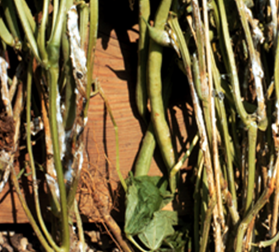
Ann Joy and Brian Hudelson, UW-Madison Plant Pathology
Revised: 4/25/2004
Item number: XHT1115
What is white mold? White mold is a serious, and often lethal, fungal disease that affects over 374 types of plants in many plant families. It causes severe damage in commercial snap, kidney and lima bean production, as well as commercial sunflower production. White mold can also be a serious problem in home vegetable and herbaceous ornamental gardens.
What does white mold look like? Symptoms of white mold vary with the plant host infected. White mold can lead to crown and stem cankers, root rots, wilts, damping-off of seedlings, and blossom and fruit rots. Plants affected by white mold can wilt rapidly as a result of stem-girdling cankers at or near the soil line. Brown spots can appear on flower petals and buds. Cottony masses of fungal threads (hyphae) may appear on stems or on nearby soil. Hard, irregularly-shaped masses called sclerotia develop within or on the surface of infected plants. The sclerotia are white at first and then turn dark brown or black when mature.
Where does white mold come from? White mold is caused by several species of the fungus Sclerotinia that overwinter as sclerotia in dead plant material or in infested soil. Sclerotia can survive for several years. During periods of cool, wet weather sclerotia germinate to form either hyphae or tiny, mushroom-like spore-producing structures called apothecia. Either spores or hyphae can infect plant tissue. Spores are dispersed primarily by wind, but also by rainsplash and insects. Infection often begins on dead or decaying plant parts like flowers and leaves, and then spreads to healthy tissue. In some plants, seeds can be contaminated by sclerotia or hyphae of the fungus.
How do I save plants with white mold? White mold is difficult to manage once infections have occurred. Prune four to five inches below obviously disease tissue or remove entire plants if they are severely affected, and burn them. Do not compost these materials because of the risk of spreading the pathogen via long-lived sclerotia.
How do I avoid problems with white mold in the future? Check seed for presence of sclerotia and remove them before planting. Promote good air circulation with proper plant spacing. Control weeds as they can be alternate hosts of the white mold fungus and can decrease air circulation. Avoid overwatering and frequent light waterings; instead water deeply early in the day. Remove dead leaves, withered flowers and other plant debris. In beds where white mold has occurred, remove and replace infested soil.
Download Article





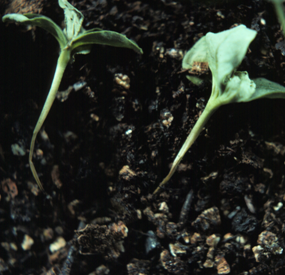 Damping Off
Damping Off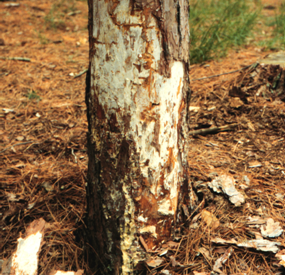 Armillaria Root Disease
Armillaria Root Disease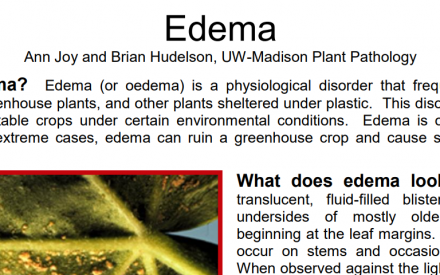 Edema
Edema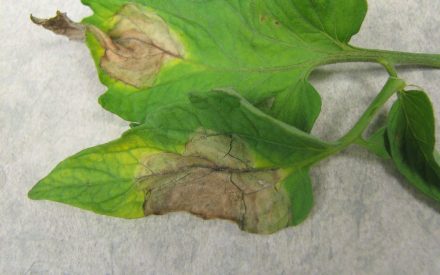 Home Garden Fungicides
Home Garden Fungicides


